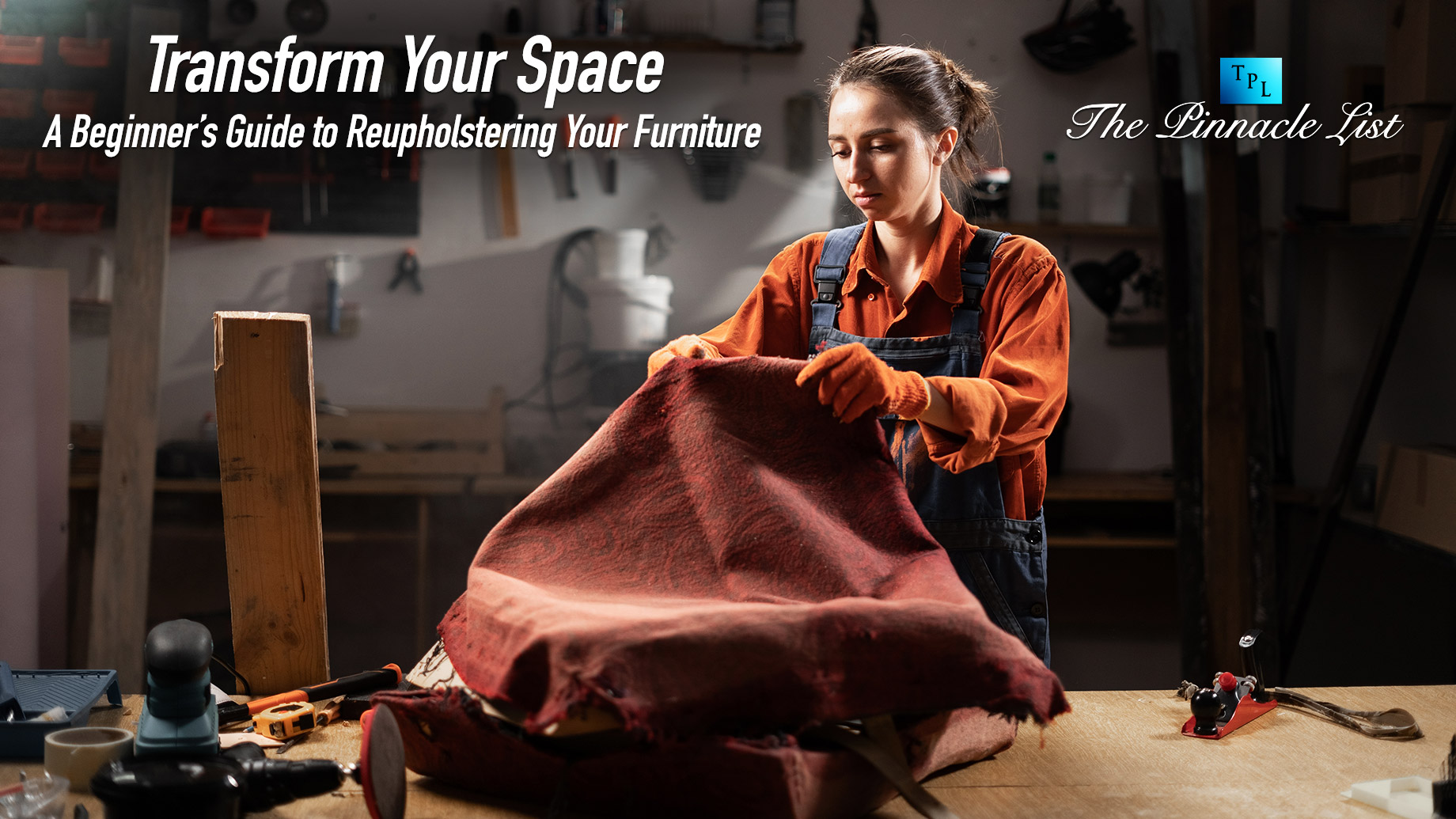
Reupholstering furniture is more than just a practical task; it’s an art form that allows you to breathe new life into your beloved pieces. Whether you’ve inherited a cherished chair from a grandparent or you found a vintage sofa at a thrift store, reupholstering provides a unique opportunity to customize your furniture to fit your style. This guide is designed for beginners, walking you through the process of reupholstering furniture, from selecting the right pieces to mastering essential techniques.
Understanding Reupholstery
At its core, reupholstery is the process of replacing the fabric or covering of a piece of furniture. This not only updates its appearance but can also enhance comfort and longevity. For many, the thought of reupholstering conjures images of intricate patterns and skilled craftsmanship, but with the right approach and tools, anyone can learn the basics.
Knowing when to consider reupholstering is crucial. Signs that furniture may need new upholstery include visible wear and tear, such as frayed fabric or exposed foam, and an outdated style that no longer fits your aesthetic. Reupholstering allows you to preserve a piece’s sentimental value while giving it a fresh, modern look.
Materials and Tools
Successful reupholstering hinges on selecting the right materials. Fabrics come in various types, patterns, and durability levels, allowing you to customize your piece to fit your style. When choosing upholstery fabric, consider the room’s use and traffic level; for instance, durable fabrics like canvas or synthetic blends are great for high-traffic areas, while softer materials like velvet are more suitable for low-use items.
In addition to fabric, you will need to gather padding and foam for added comfort. Upholstery memory foam is an excellent choice, as it conforms to the body and provides superior support. The thickness and density of the foam can greatly influence the feel of the furniture, so choose wisely based on how the piece will be used. Other necessary materials include batting for cushioning, webbing for support, and springs for elasticity.
Equipping yourself with the right tools is equally important. A staple gun, upholstery needle, scissors, and a fabric cutter are just a few essentials you will need. You can find these tools at most craft or hardware stores, and many suppliers offer upholstery kits designed for beginners, making it easier to gather everything you need.
Preparing for Reupholstery
Before diving into your reupholstering project, it’s crucial to create a suitable workspace. A clean, well-lit area allows you to work efficiently and safely. Lay out all your tools and materials so that they are easily accessible throughout the project.
Safety should always be a priority. When using tools like staple guns and fabric cutters, take the time to familiarize yourself with their operation. Wearing gloves and eye protection can also help prevent accidents. Planning your project is a key step. Determine the timeline for your reupholstering task, considering how much time you can dedicate each day. Break the project down into manageable steps, making it less overwhelming.
Step-by-Step Reupholstery Process
Once you’ve prepared adequately, you can begin the exciting process of reupholstering. Start by removing the old upholstery. Carefully strip away the existing fabric using a staple remover or flathead screwdriver. Take your time, as you want to preserve the structure underneath. This step can be quite revealing; you may uncover issues that need addressing, such as worn-out padding or broken springs.
Next, assess and repair the furniture frame. If you find any structural issues, this is the time to fix them. Tightening screws, replacing broken parts, and applying wood glue can help reinforce the piece. This foundational work is vital for ensuring your reupholstered furniture lasts. With the frame secured, it’s time to add new padding and foam. Cut the foam to size and adhere it to the frame using spray adhesive. If you’re working with a chair or sofa that requires additional cushioning, consider layering batting over the foam to create a softer feel.
Now comes the most creative part: applying the new fabric. Measure and cut your fabric, ensuring you leave enough excess for wrapping around the edges. Begin by securing the fabric on the underside of the furniture with a staple gun, pulling it taut as you go. Pay attention to corners and curves, as these areas can be tricky. Take your time to ensure a smooth, wrinkle-free finish.
Conclusion
Reupholstering furniture is a rewarding endeavor that not only transforms your space but also provides an opportunity for personal expression. By following this beginner’s guide, you can approach your project with confidence and creativity. Remember, the key is to enjoy the process, embrace any challenges that come your way, and take pride in the stunning piece of furniture you create. Share your experiences and photos of your reupholstered projects with others; you may inspire someone else to take on this fulfilling DIY journey.